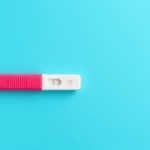Understanding 17 DPO Implantation Bleeding
17 DPO, or 17 days post-ovulation, refers to a specific timeframe in the menstrual cycle. For women trying to conceive, this is a critical period. Implantation bleeding is a light spotting that can occur when a fertilized egg attaches itself to the lining of the uterus, generally around 6-12 days after ovulation. Therefore, if a woman experiences light bleeding around 17 DPO, it may raise questions about pregnancy. However, not all women experience implantation bleeding, and other factors can contribute to spotting. Understanding the signs and symptoms associated with 17 DPO implantation bleeding can help women navigate their fertility journey more effectively.
Recognizing the characteristics of implantation bleeding, distinguishing it from menstrual bleeding, and understanding when to take a pregnancy test can empower women in their reproductive health decisions. It is essential to know that while some may experience this slight spotting, others may not notice any bleeding at all. Keeping track of one’s cycle and symptoms can provide insights into potential pregnancy and help manage expectations when trying to conceive.
What is Implantation Bleeding?
Implantation bleeding occurs when a fertilized egg implants itself into the uterine lining. This typically takes place 6-12 days after ovulation, which aligns with the 17 DPO timeline. This spotting can be an early indicator of pregnancy, although it may not occur in every woman. It is generally lighter in color than menstrual bleeding and may last from a few hours to a few days.
Some women may confuse implantation bleeding with their menstrual period, but there are key differences. Implantation bleeding is often much lighter and shorter in duration compared to a regular period. Color can range from light pink to brown, whereas menstrual blood is usually bright red or dark. Recognizing these differences aids in understanding the significance of spotting at this stage in the cycle.
Additionally, implantation bleeding may be accompanied by other early pregnancy signs like mild cramping or breast tenderness. However, if the bleeding becomes heavy or is accompanied by severe pain, it is advisable to consult a healthcare provider to rule out any complications.
Timing of Implantation Bleeding
Understanding the timing is crucial when discussing 17 DPO implantation bleeding. After ovulation, if the egg is fertilized, it takes approximately 6-12 days for implantation to occur. Therefore, bleeding at 17 DPO suggests a possibility of pregnancy.
To accurately track pregnancy, women can monitor their menstrual cycles and note any irregularities. If normal menstruation symptoms differ, such as experiencing lighter bleeding at 17 DPO, it can be a signal to take a pregnancy test.
Tools like ovulation trackers and period apps can help women keep tabs on their fertile days and may provide clarity on when implantation bleeding could occur. An awareness of one’s cycle may help in identifying og further symptoms, using them as a guide during the crucial conception window.
It’s important to remember that not everyone will experience implantation bleeding. The absence of this symptom does not rule out pregnancy. Women should consider taking a pregnancy test if they suspect they are pregnant, regardless of whether or not they have noticed any bleeding.
Distinguishing Between Implantation Bleeding and Menstrual Period
Knowing how to distinguish between implantation bleeding and a menstrual period is vital for women who are monitoring their reproductive health. Implantation bleeding is typically lighter, shorter, and different in color than menstrual bleeding.
Characteristics of implantation bleeding include:
Conversely, a menstrual period usually presents with bright red blood, heavier flow, and lasts longer. Recognizing these differences can prevent confusion and ensure women are aware of their cycles.
In some cases, women may experience irregular spotting around their expected period due to stress, medications, or hormonal fluctuations. Keeping a menstrual diary can help track patterns and pinpoint what is normal for your body, enabling better insights during future cycles.
Common Symptoms Associated with Implantation Bleeding
Besides light spotting, several other early pregnancy symptoms may accompany implantation bleeding. Recognizing these signs can further support your journey in understanding your reproductive health.
Common symptoms include:
It’s essential to understand that not all women will experience these symptoms, and their intensity can vary. They can also be common premenstrual symptoms, making it challenging to discern pregnancy from an impending period.
When to Take a Pregnancy Test After Implantation Bleeding
If implantation bleeding occurs around 17 DPO, knowing when to take a pregnancy test is vital. Pregnancy tests work by detecting the hormone hCG (human chorionic gonadotropin) in urine, which only appears after a fertilized egg has implanted successfully.
Typically, it is recommended to wait at least one week after you suspect implantation bleeding to take a home pregnancy test. Testing too early may lead to inaccurate results due to insufficient levels of hCG.
The best practice would be to test at least three days after a missed period or, for those tracking cycles closely, about 18 days post-ovulation. Following these guidelines can enhance the likelihood of obtaining accurate test results.
Women would also benefit from using early-detection pregnancy tests available at pharmacies, as they can pick up lower levels of hCG. If a negative result occurs but other pregnancy signs persist, wait a few days and test again.
Consulting with Healthcare Providers
Consulting with a healthcare provider is crucial for women experiencing unexpected spotting or unusual symptoms during their cycle, especially at the 17 DPO mark. If there is a significant change in menstrual patterns, such as heavy bleeding or severe pain, promptly seeking medical advice is advisable.
Healthcare providers can offer professional insights after physical examinations, lab tests, and imaging studies to rule out any complications such as ectopic pregnancies or hormonal imbalances. A timely consultation can ensure that any potential issues are addressed and managed properly, protecting overall reproductive health.
Routine check-ups and discussing cycle irregularities with a healthcare provider can help track reproductive health over time and provide much-needed peace of mind when navigating the fertility journey.
Final Thoughts
Understanding 17 DPO implantation bleeding is essential for anyone trying to conceive or monitoring their menstrual cycle. Being aware of its occurrence and recognizing its differences from a regular period can be empowering. Implantation bleeding, occurring between 6-12 DPO, signifies the fertilized egg’s attachment to the uterine lining and may present with light spotting.
Tracking one’s cycle while being mindful of symptoms such as cramping or breast tenderness enhances awareness of potential pregnancy signs. Women are encouraged to use ovulation trackers or period apps to assist in this process, providing clarity during their fertile window.
Recognizing when to test for pregnancy after implantation bleeding is equally important, as waiting for sufficient levels of hCG can significantly improve the accuracy of results.
Consulting healthcare providers regarding irregularities can ensure that women are informed and able to make educated decisions about their reproductive health. Having these discussions is invaluable, ensuring any health issues are addressed early on.
In conclusion, while not every woman will experience implantation bleeding, understanding its implications at 17 DPO can be incredibly helpful. Educating oneself on recognizing signs, timing, and tracking menstrual health can ultimately provide a clearer path in the journey of conception.
Frequently Asked Questions
Further Reading
What Type of Psychotherapy Is Best for Anxiety?







